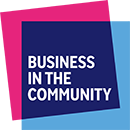Overcoming the Three Key Challenges to Buying Circular
Businesses increasingly see the circular economy as a strategy for reducing the ‘hidden’ embodied emissions within the products they buy. In simple terms, circular economy practices use the five R’s:
- Reduce material usage
- Reuse products
- Repair instead of replace
- Remanufacture old products so that they are as good as new
- Recycle
Combined with sharing products between multiple users and product-service systems, through which you buy the service that the product provides rather than the item itself, these practices reduce the number of raw materials that are required to meet our needs. This, in turn, reduces the emissions that are created through extracting, processing, and transporting those materials.
Direct environmental damage to nature is also reduced, as is the amount of waste that is created, and the circular economy also presents opportunities to create social value through local job creation in repair, refurbishment, and recycling.
Understanding the importance of collaboration
For the last four years, Business in the Community (BITC) has been a partner in the Interreg ProCirc project, which has been set up to work with procurers to increase their understanding of the circular economy and to provide practical support to bring the circular economy into procurement.
No single business can become truly circular on its own. Many challenges businesses will grapple with in their circular transition are systemic. They require people to choose to do things differently, industries to move together, or policy changes to move the bar for everyone. The relationship between buyers and suppliers is crucial.
In the final year of the ProCirc project, BITC has been working with its members and partners to create Joint Statements of Demand. These set out commitments (a statement) that a group of procurers from signatory organisations (a joint statement) will adopt, as well as the ‘circular asks’ that the procurers would like to see their suppliers offering in future (a Joint Statement of Demand). The three product categories that Joint Statements of Demand have been created on through the project are office furniture, professional clothing, and electric vehicle chargers.
Becoming a signatory to a Joint Statement of Demand can help procurers to overcome several systemic challenges to buying more circular products.
- Challenge 1: Procurers do not know what to ask for
Procurers are not sustainability experts and often do not know what questions to ask about the circular economy. The specific circular economy issues that need to be considered will change depending on the particular product being bought, and could include considerations such as making products that last longer or offering a service that allows products to be recycled in a ‘closed loop’. By becoming a signatory to a Joint Statement of Demand, you can use a set of future focussed circular asks that have been co-created by a group of procurers, with input from leading suppliers and experts in the relevant product category as the basis of the asks that you put out to suppliers.
- Challenge 2: Procurers feel they have little influence over suppliers
As a single customer, many buyers feel they are a lone voice and have little ability to influence their supplier. By becoming a signatory to a Joint Statement of Demand you are joining with other procurers that share your circular ambition and are speaking with one voice.
- Challenge 3: There are few circular products available to buy
There has been something of a chicken and egg problem with bringing circular products to the mass market: many buyers aren’t asking for circular products because there aren’t many available. Meanwhile, suppliers aren’t selling circular products because buyers aren’t asking for them.
By becoming a signatory to a Joint Statement of Demand you can help to solve this problem by committing to ask for and reward circularity in future tenders for the relevant product categories. This assures suppliers that there will be a future demand, allowing them to invest and innovate in developing more circular products and services.
Become a Joint Statement of Demand signatory
Register to join our events to learn more about the benefits of becoming a signatory to one of our Joint Statements of Demand, and for a detailed look at the commitments and asks for each product category.
- 25 April: Using Purchasing Power to Unlock Circular Office Furniture
- 27 April: Using Purchasing Power to Unlock Circular Workwear
Find out more about our Joint Statements of Demand and express your interest in becoming a signatory.

EMBED CIRCULAR ECONOMY PRINCIPLES
INTO YOUR ORGANISATION

